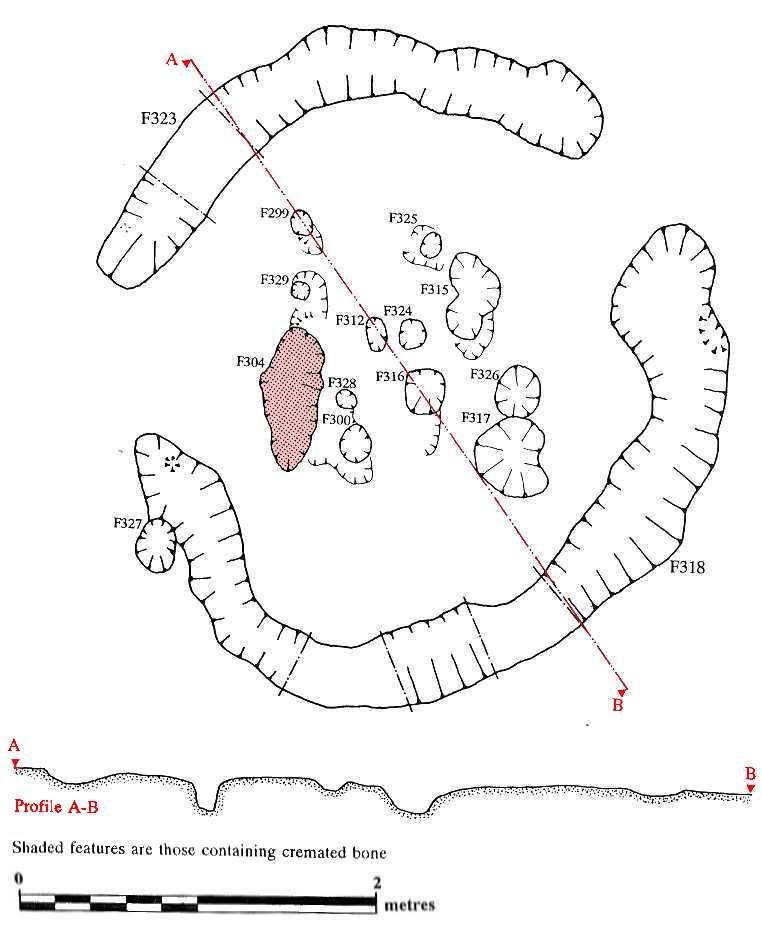One of the earthfast Ronaldsway jars was enclosed within an oval gulley (F50). Postholes suggest that timber markers may have indicated the position of some of the urn earthfast jars. To the north-east was a ring-ditch (F234/F236) with an estimated diameter of 9m. Unfortunately, the eastern side lay outside the excavated area under a spoil heap in the edge of the quarry. The ring-ditch may have contained a low mound or barrow as the natural surface was little disturbed and the ground appeared to rise-up slightly at this point. The only feature in the interior (F240) was a circular depression edged with stones set on edge; probably a natural cryoturbation structure rather than a constructed feature. Overall, the arrangement of earthfast jars associated with ring-ditch is very reminiscent of the cemetery at Ballateare (Bersu 1947; Moffatt 1978, 205).
The Ronaldsway jars from Billown can confidently
be dated by analogy to the third millennium Cal BC (Burrow and Darvill 1997).
Broadly contemporary at Billown is a series of shafts. Five have been excavated
to date, F282 which cuts the Neolithic ditch, F44,
F67, F232, and F224. The deepest
of these, F224, extends at least 3.5m
into the till. Material taken from one of two substantial lenses of charcoal
within the fill of this shaft dates to 2568-2409 Cal BC (3980±60
BP (Beta-110690)). The smallest, F67,
at less than 1m in diameter and only 1.4m deep had a large glacial erratic
centrally set on the bottom. Whether deliberately placed there, discovered
during the original digging of the shaft, or fallen there subsequently is
not known.

Roughly in the centre of the causeway or
gap in the line of ditch F17/F272 was
a small structure best described as a mini-henge (F318/F323).
It comprised two ditch segments with eccentrically opposed entrances defining
an internal area some 1.8m across. In the centre was a series of 12 intercutting
scoops, some of which contained burnt bone, charcoal, and quartz pebbles.
It is possible that this feature was once covered by a low mound or barrow
as the surrounding natural surface looked less disturbed than elsewhere.